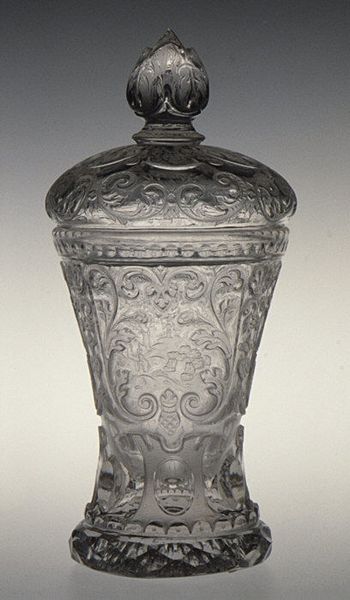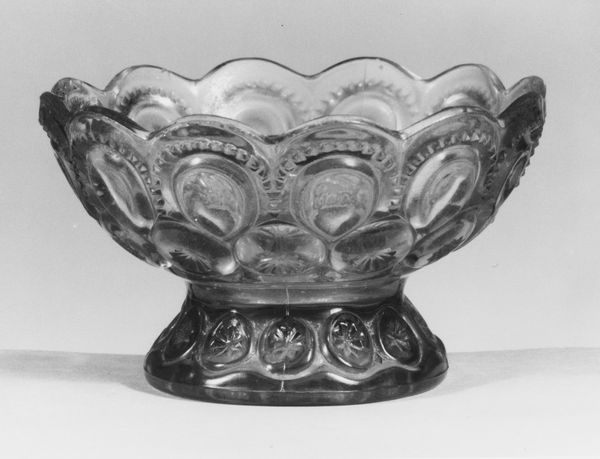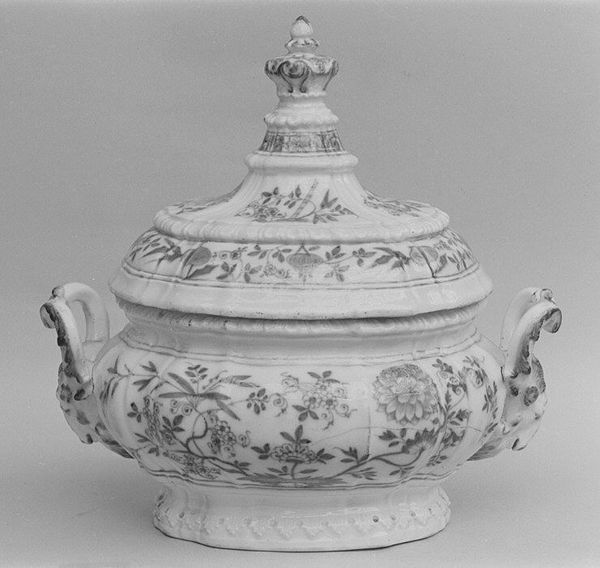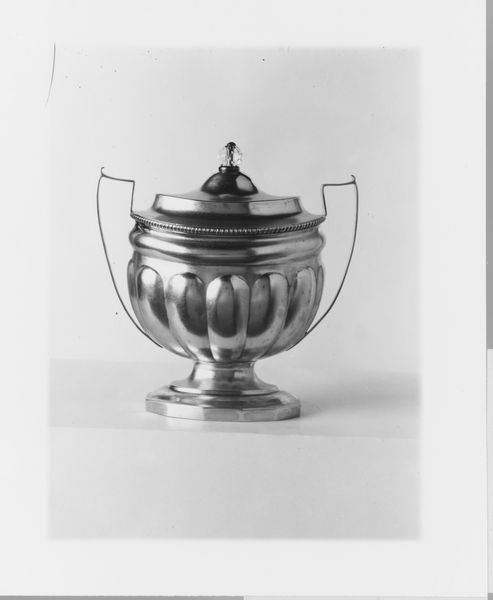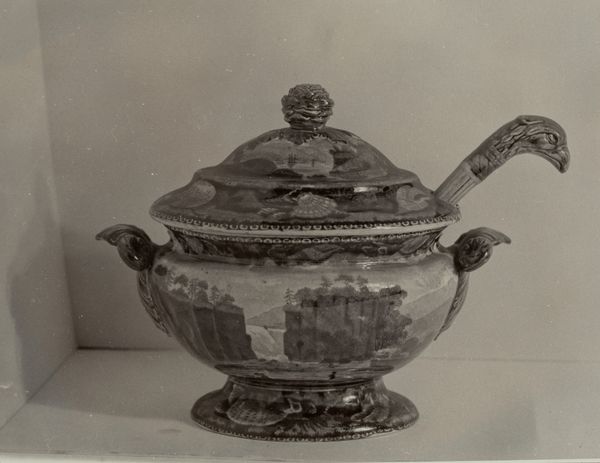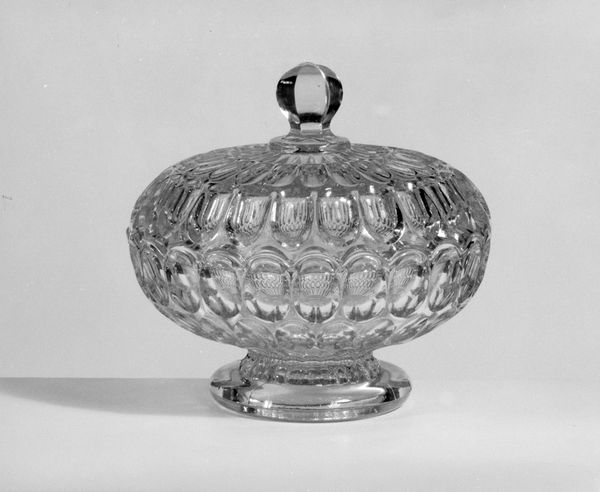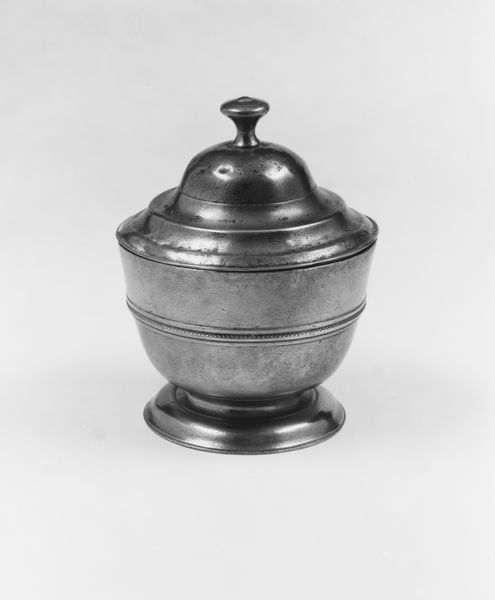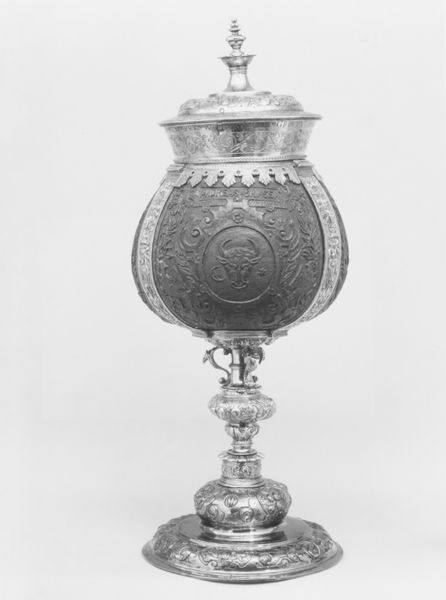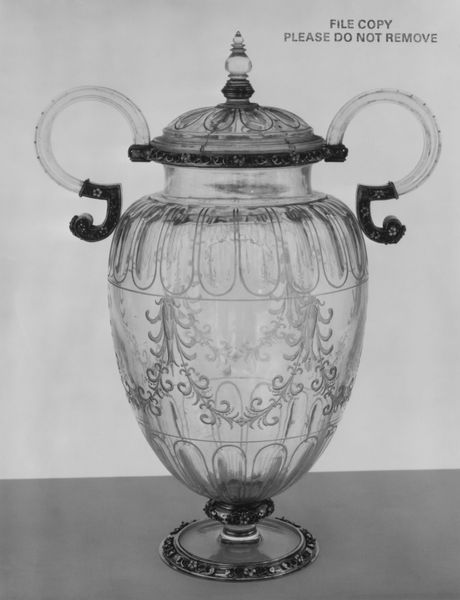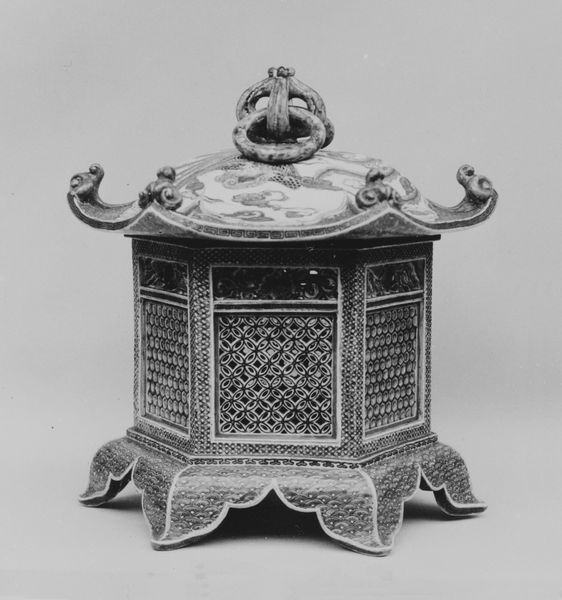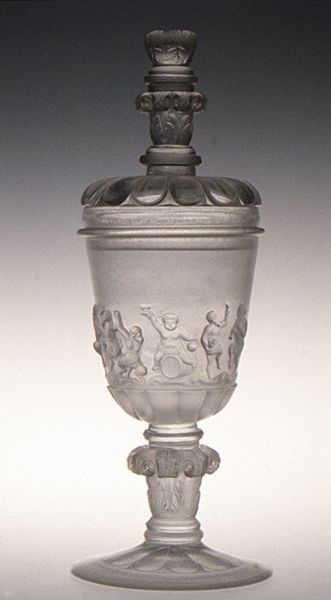
ceramic, glass, sculpture
#
ceramic
#
glass
#
sculpture
#
ceramic
#
decorative-art
Dimensions: H. 5 3/4 in. (14.6 cm)
Copyright: Public Domain
Editor: Here we have a "Covered Sugar Bowl" made by Providence Flint Glass Works between 1830 and 1833, currently residing in the Metropolitan Museum of Art. It seems to be primarily made of glass, with incredible detail. It gives off this vibe of opulence, almost like it belongs in a royal setting. What’s your take on it? Curator: It's a fantastic example of early American decorative arts, isn't it? The level of detail in the pressed glass speaks to the ingenuity of the period. Sugar, especially in the early 19th century, wasn't just a commodity; it was a signifier of wealth and social standing. Owning such an elaborate container broadcasts a very specific message. What do you think the repeated patterns signify in relation to industrialisation at this time? Editor: Well, I can see how it might suggest the emergence of mass production through these repeated motifs. It also indicates to me a wider accessibility to luxury goods for a burgeoning middle class, even though sugar remained somewhat exclusive. What are your thoughts on how museums displaying objects like this plays into constructing a national identity? Curator: Excellent point. Museums are never neutral spaces, are they? Displaying such an object reinforces a narrative of American ingenuity and economic progress. It connects the nation's history to the wider narrative of global trade and colonial exploitation inherent in the sugar trade itself, whether intentionally or unintentionally. Who gets to enjoy 'the sweet life,' so to speak, has always been a political question. I see that social dynamic in it. It really illustrates a very material form of social class! Editor: So the display choices shape how we understand these objects in relation to historical power structures. I hadn’t thought of the sugar trade in that explicit way before! Curator: Exactly. Seeing how an everyday item like this embodies such complex cultural meanings, really helps to reflect on the public role of art, I think.
Comments
No comments
Be the first to comment and join the conversation on the ultimate creative platform.
